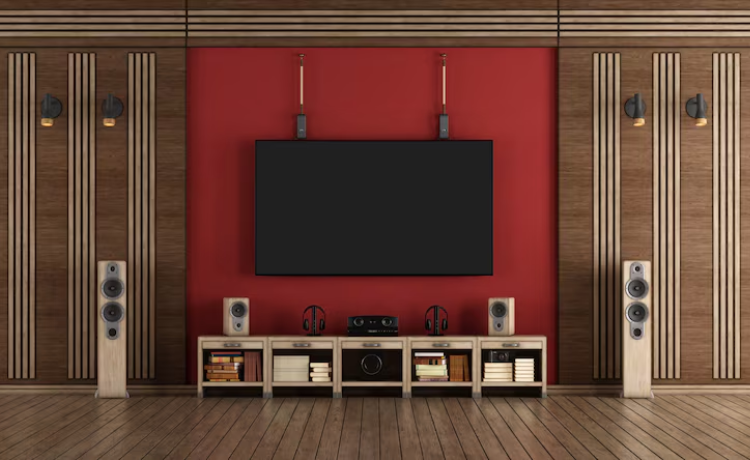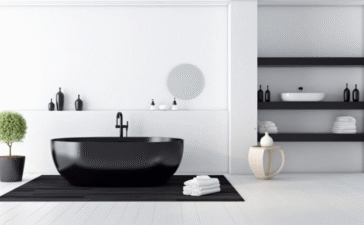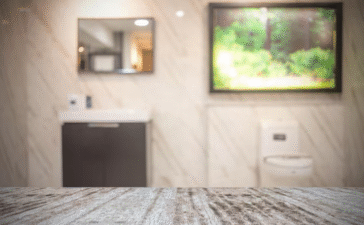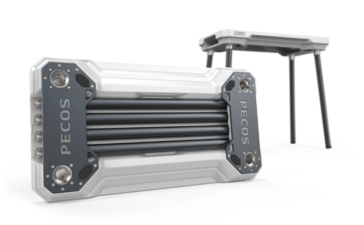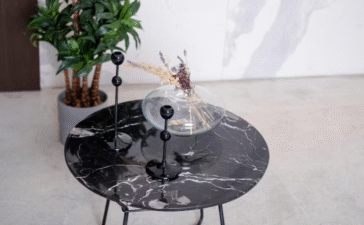The modern home entertainment experience has evolved far beyond simply mounting a TV on the wall. Enter the media wall—a sophisticated design solution that seamlessly blends technology with interior aesthetics to create stunning focal points in living spaces. This comprehensive guide explores everything you need to know about creating the perfect media wall for your home.
A media wall represents more than just a place to house your television. It serves as a carefully designed architectural feature that integrates entertainment technology with storage solutions, ambient lighting, and decorative elements. The concept has gained tremendous popularity among homeowners seeking to elevate their living rooms and home theaters while maintaining clean, organized spaces.
The importance of a media wall in home design cannot be overstated. These installations offer the perfect marriage of functionality and style, allowing you to showcase your entertainment setup while creating a cohesive design element that enhances your room’s overall aesthetic. Whether you’re designing a cozy family room or an elaborate home theater, a well-planned media wall becomes the centerpiece that ties everything together.
What is a Media Wall?
Understanding the media wall meaning begins with recognizing its dual purpose as both an entertainment hub and a design statement. A media wall is essentially a custom-built or pre-fabricated unit that houses your television, audio equipment, gaming consoles, and other electronic devices while providing additional storage and display space.
The beauty of asking “what is a media wall” lies in its versatility. These installations can range from simple floating shelves around a media wall for TV to elaborate built-in units that span entire walls. The key characteristic that defines any media wall is its ability to organize and display entertainment technology in an aesthetically pleasing manner.
Different types of media walls cater to various needs and preferences. The media wall with fireplace has become increasingly popular, combining the warmth and ambiance of a fireplace with modern entertainment technology. These dual-purpose installations create inviting gathering spaces that serve multiple functions throughout the year.
LED media wall designs incorporate advanced lighting systems to create dramatic effects and enhance the viewing experience. These installations often feature backlighting, accent lighting, or even color-changing LED strips that respond to the content being displayed on screen.
Modern media wall design emphasizes clean lines, minimal visual clutter, and seamless integration with existing décor. These contemporary installations often feature hidden cable management, wireless technology integration, and sleek materials that complement modern interior design trends.
Media Wall Design Ideas
Choosing the right media wall design requires careful consideration of your space, lifestyle, and personal aesthetic preferences. The process begins with evaluating your room’s layout, ceiling height, and existing architectural features to determine the most suitable approach.
Modern media wall ideas often incorporate geometric shapes, contrasting materials, and innovative storage solutions. Consider designs that feature asymmetrical shelving, mixed textures, or unexpected material combinations to create visual interest while maintaining functionality.
The minimalist media wall approach focuses on simplicity and clean lines. These designs typically feature neutral colors, hidden storage, and streamlined profiles that allow the technology to take center stage without overwhelming the space. Floating components and concealed mounting systems contribute to the minimalist aesthetic.
Creating a home theater media wall involves considerations beyond basic television viewing. These installations must accommodate surround sound systems, projectors, gaming equipment, and specialized lighting controls. The design should support an immersive entertainment experience while maintaining easy access to all components.
Tech-friendly media wall designs anticipate future technology upgrades and changing entertainment needs. These installations include flexible mounting systems, abundant cable management options, and modular components that can be reconfigured as technology evolves.
Media wall with built-in shelves offers versatile storage solutions for books, decorative objects, gaming accessories, and media collections. The key to successful shelf integration lies in balancing functional storage with aesthetic appeal, ensuring that the shelving enhances rather than clutters the overall design.
The fireplace media wall concept deserves special attention due to its complexity and impact. These installations require careful planning to ensure proper ventilation, heat management, and safety considerations. The media wall with electric fireplace option provides easier installation and greater flexibility in placement while still delivering the desired ambiance.
Building a Media Wall: Step-by-Step Guide
The decision between DIY media wall construction and professional installation depends on several factors including your skill level, available time, and the complexity of your desired design. Understanding how to build a media wall begins with honest assessment of your capabilities and the project’s requirements.
Professional installation offers expertise in electrical work, structural modifications, and complex cable management. Professionals can handle permits, ensure code compliance, and provide warranties on their work. However, professional installation typically costs significantly more than DIY approaches.
DIY media wall projects can be incredibly rewarding and cost-effective for those with appropriate skills and tools. Simple designs using pre-made components or modular systems are particularly well-suited to DIY approaches. However, complex installations involving electrical work or structural modifications should involve professionals.
Essential materials for media wall construction include mounting hardware, shelving materials, cable management systems, and finishing materials. Wood media wall constructions might require lumber, wood stain or paint, brackets, and mounting hardware. Stone media wall installations need different materials including stone veneer, adhesives, and specialized mounting systems.
A comprehensive DIY media wall kit can simplify the construction process by providing pre-cut components, hardware, and detailed instructions. These kits offer a middle ground between fully custom construction and pre-built units, allowing for some customization while reducing complexity.
The media wall installation process begins with careful measurement and planning. Mark mounting points, identify electrical requirements, and ensure adequate structural support for the intended components. Proper preparation prevents costly mistakes and ensures professional-looking results.
Installing media wall unit components requires attention to detail and patience. Begin with structural elements like mounting brackets and shelving supports before adding finishing materials and cable management systems. Take time to verify level and plumb measurements throughout the installation process.
Home media installation considerations extend beyond the physical construction to include network connectivity, power requirements, and ventilation needs. Plan for adequate electrical outlets, internet connectivity, and airflow around electronic components to ensure optimal performance and longevity.
Key Features to Look for in a Media Wall
Selecting appropriate materials for media wall construction significantly impacts both appearance and durability. The choice between wood, metal, stone, or composite materials should reflect your design goals, budget, and maintenance preferences.
Wood media wall installations offer warmth, versatility, and relatively easy customization. Different wood species and finishes can complement various design styles from rustic to contemporary. However, wood requires regular maintenance and may be susceptible to moisture damage in some environments.
Stone media wall designs create dramatic focal points with natural textures and colors. Natural stone offers unmatched durability and unique aesthetic appeal, while manufactured stone provides consistent appearance and easier installation. Both options require proper structural support due to their weight.
Media wall storage solutions should balance accessibility with aesthetics. Hidden storage compartments keep clutter out of sight while open shelving provides display opportunities for decorative items. Consider your storage needs for gaming controllers, remote controls, media collections, and other accessories.
Media wall cabinets with doors can conceal equipment and create clean lines when components aren’t in use. Ventilated cabinet designs ensure adequate airflow around electronic equipment while maintaining the desired appearance.
Built-in shelves integrated into the media wall design provide seamless storage and display options. These shelves can accommodate books, decorative objects, gaming accessories, and other items while maintaining the overall design aesthetic.
Media wall lighting transforms the installation from functional to spectacular. Strategic lighting enhances the viewing experience, provides ambient illumination, and creates dramatic visual effects. LED media wall lighting offers energy efficiency, longevity, and color customization options.
Lighting design for media wall installations should consider both functional and aesthetic requirements. Task lighting illuminates shelving and controls, accent lighting highlights architectural features, and bias lighting reduces eye strain during television viewing.
Smart lighting systems allow for dynamic control of color, intensity, and timing to create immersive entertainment experiences. These systems can synchronize with on-screen content, respond to music, or provide automated lighting schedules.
Cost of Media Wall Installation
Understanding media wall cost requires consideration of multiple factors including size, complexity, materials, and installation method. Basic installations using pre-made components might cost a few hundred dollars, while custom built-in units can reach several thousand dollars.
The cost of media wall installation varies significantly based on geographic location, contractor expertise, and project complexity. Professional installation typically adds 50-100% to material costs but ensures proper execution and often includes warranties.
Material costs represent a significant portion of the total project budget. Pricing for media wall components ranges from budget-friendly particle board options to premium hardwood and natural stone materials. Electronics mounting hardware, cable management systems, and lighting components add to the overall cost.
Labor costs for professional installation depend on the project’s complexity and local wage rates. Simple installations might require only a few hours, while elaborate custom installations can take several days to complete. Specialized work like electrical modifications or structural changes increases labor costs.
Creating an affordable media wall requires careful planning and smart material choices. Pre-made units offer cost savings compared to custom construction, while DIY installation eliminates labor costs entirely. Shopping for materials during sales and choosing cost-effective alternatives can significantly reduce expenses.
Budget-friendly media wall solutions include modular shelving systems, floating shelf arrangements, and simple mounting solutions. These approaches provide media wall functionality without the expense of fully custom installations.
Cost-effective media wall solutions balance price with functionality and appearance. Consider which features are essential versus nice-to-have, and prioritize spending on components that provide the greatest impact on your daily use and enjoyment.
Maintenance and Care of Your Media Wall
Proper media wall maintenance ensures your investment continues to look and function optimally for years to come. Regular cleaning and preventive care protect both the structural components and electronic equipment housed within the installation.
Cleaning media wall surfaces requires appropriate techniques for different materials. Wood surfaces need specialized cleaners that won’t damage finishes, while stone surfaces require pH-neutral cleaners to prevent etching or discoloration. Glass shelves and metal components each have specific cleaning requirements.
Electronic equipment housed in media walls generates heat and attracts dust, requiring regular attention to maintain optimal performance. Dust accumulation can impair ventilation and reduce equipment lifespan, making regular cleaning essential for both appearance and functionality.
Care for media wall installations includes monitoring for signs of wear, loose connections, or structural issues. Address minor problems promptly to prevent more significant damage that could require expensive repairs or replacement.
Media wall durability depends largely on quality of construction and materials used. High-quality components and proper installation techniques contribute to longevity, while poor construction or inappropriate materials can lead to premature failure.
Preventing media wall damage involves understanding and addressing potential threats including moisture, temperature fluctuations, and physical impact. Proper ventilation prevents overheating, while appropriate humidity control protects wood and electronic components.
Protecting your media wall investment requires ongoing attention to environmental conditions, proper use of equipment, and prompt attention to maintenance needs. Establish regular maintenance schedules and keep records of cleaning and service activities.
Where to Buy a Media Wall
Finding the right source to buy media wall components or complete units requires research into reputable retailers and manufacturers. Various options exist from big-box retailers to specialized furniture manufacturers and custom installers.
Online retailers offer extensive selection and competitive pricing for media wall units and components. However, shipping costs for large items and inability to examine products in person can be disadvantages. Read reviews carefully and understand return policies before purchasing.
Furniture stores and home improvement centers stock ready-made media wall units in various styles and price ranges. These locations allow you to see and touch products before purchasing, though selection may be limited compared to online options.
Specialized audio-visual retailers often carry higher-end media wall solutions designed specifically for home theater applications. These retailers typically offer expert advice and installation services but may have higher prices than general retailers.
Where to buy media wall solutions depends on your specific needs, budget, and desired level of customization. Consider factors like warranty coverage, customer service, and local availability when making your decision.
Custom media wall design services create unique installations tailored specifically to your space and requirements. These services typically cost more than ready-made options but provide unmatched flexibility and integration with existing décor.
Bespoke media wall design processes involve consultation, design development, manufacturing, and installation services. Work with experienced designers who understand both aesthetic and technical requirements for successful media wall installations.
Frequently Asked Questions
How much space do I need for a media wall?
Media walls can be designed for virtually any space, from small apartments to large home theaters. Minimum space requirements depend on your television size and desired features, but even compact installations can be effective. Consider room proportions and viewing distances when planning your media wall size.
Can I add a fireplace to an existing media wall?
Adding a fireplace to an existing media wall is possible but requires careful consideration of ventilation, electrical requirements, and structural modifications. Electric fireplaces offer the easiest retrofit option, while gas or traditional fireplaces require more extensive modifications and professional installation.
What’s the best material for a media wall?
The best material depends on your design goals, budget, and maintenance preferences. Wood offers versatility and warmth, metal provides modern aesthetics and durability, while stone creates dramatic focal points. Consider factors like room humidity, maintenance requirements, and existing décor when choosing materials.
How do I hide cables in a media wall?
Cable management options include in-wall routing, cable channels, cord covers, and wireless technology where possible. Plan cable routing during the design phase for the cleanest appearance. Professional installation often provides superior cable management compared to DIY approaches.
Should I hire a professional or build my media wall myself?
The decision depends on your skill level, available time, and project complexity. Simple installations using pre-made components are suitable for DIY, while complex custom installations or those requiring electrical work should involve professionals. Consider local building codes and permit requirements.
How do I choose the right size media wall for my room?
Media wall size should complement room proportions and provide appropriate viewing distances for your television. Consider ceiling height, furniture placement, and traffic flow when determining dimensions. Professional designers can help optimize sizing for your specific space.
What lighting works best with media walls?
LED lighting offers energy efficiency, longevity, and customization options ideal for media walls. Consider bias lighting behind televisions to reduce eye strain, accent lighting for shelving, and ambient lighting for overall room illumination. Smart lighting systems provide maximum flexibility and control.
How much do custom media walls cost?
Custom media wall costs vary widely based on size, complexity, materials, and location. Basic custom installations might start around $2,000, while elaborate installations can exceed $10,000. Get multiple quotes and clarify what’s included in pricing to make accurate comparisons.
Also Check: “Bedroom Sizes“
Creating Your Perfect Entertainment Centerpiece
Media walls represent the perfect fusion of technology and design, offering both functional benefits and aesthetic enhancement for modern homes. These installations organize entertainment equipment while creating stunning focal points that elevate entire living spaces.
The benefits of media wall installations extend beyond simple organization to include improved room aesthetics, better equipment protection, and enhanced entertainment experiences. Whether you choose a simple floating shelf arrangement or an elaborate custom installation, a well-designed media wall transforms how you interact with your home entertainment system.
Media wall advantages include reduced clutter, improved safety through proper equipment mounting, better cable management, and increased home value. These installations also provide opportunities to showcase personal style while accommodating evolving technology needs.
Consider your specific needs, budget, and design preferences when planning your media wall project. Take time to research options, gather inspiration, and plan carefully for the best results. Whether you choose DIY construction or professional installation, a well-executed media wall will provide years of enjoyment and enhance your home’s functionality and appeal.
Start exploring media wall designs that match your vision and begin planning your transformation today. Your perfect entertainment centerpiece awaits, ready to elevate both your daily entertainment experience and your home’s overall design aesthetic.
